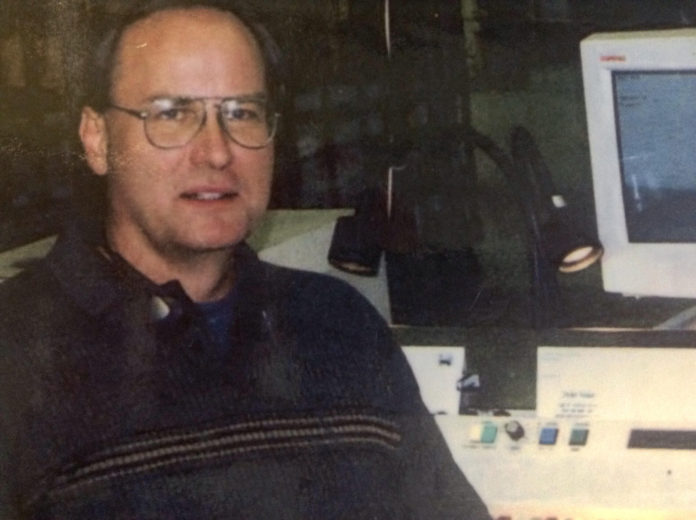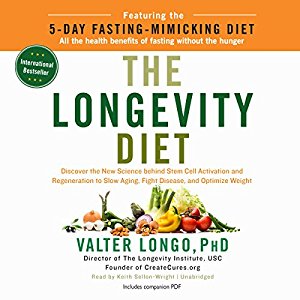The internationally renowned, clinically tested, revolutionary diet program to lose weight, fight disease, and live a longer, healthier life. Can what you eat determine how long, and how well, you live? The clinically proven answer is yes, and THE LONGEVITY DIET is easier to follow than you’d think. The culmination of twenty-five years of research on aging, nutrition, and disease across the globe, this unique program lays out a simple solution to living to a healthy old age through nutrition. The key is combining the healthy everyday eating plan the book outlines, with the scientifically engineered fasting-mimicking diet, or FMD; the FMD, done just 3-4 times a year, does away with the misery and starvation most of us experience while fasting, allowing you to reap all the beneficial health effects of a restrictive diet, while avoiding negative stressors, like low energy and sleeplessness. Valter Longo, director of the Longevity Institute at USC and the Program on Longevity and Cancer at IFOM in Milan, designed the FMD after making a series of remarkable discoveries in mice, then in humans, indicating that specific diets can activate stem cells and promote regeneration and rejuvenation in multiple organs to significantly reduce risk for diabetes, cancer, Alzheimer’s, and heart disease. Longo’s simple pescatarian daily eating plan and the periodic fasting-mimicking techniques can both yield impressive results. Low in proteins and sugars and rich in healthy fats and plant-based foods, The Longevity Diet is proven to help you. The audiobook version is narrated by Keith Sellon-Wright.
Jonathan Lowe) There have been many books on diet related to disease. Some of the conclusions are that “the less red meat the better.” Although one says that there is no link between saturated fat in meat and heart disease, another points to a link between the iron in meat (and flour products in America) to Alzheimers in over 40 people. Sugar and salt play a big role in diabetes, too. What have your studies shown?
Valter Longo) Our studies have shown that a high protein diet is associated with major increases in overall and cancer mortality especially if the source of proteins is mostly animal and only up to age 65. So generally, our findings are consistent with this above but focus on the proteins or red meat and show that there are 2 major phases of adult life in which protein intake should be different.
Q) Metabolic syndrome from soda, called “liquid candy?”
A) The problem is not the soda but the empty sugar. You could get to the same problem with pasta, rice, bread. However, it is important to point out that the problem start when you have excess sugar or starches not small amounts of it.
Q) A book on coffee—The Mindspan Diet—surprised me by claiming that light roast beats dark for antioxidants and health, with dark, burnt beans possibly linked to cancer. Do you agree?
A) Most research indicates protective effects of coffee against Parkinson’s, Alzheimer’s etc, so I don’t think we know enough to differentiate yet. For now I would say that a few cups a day are good.
Q) My sister has brain cancer, and had bone cancer. A recent MRI showed her tumor shrinking slightly. I have been pushing dark berries and green leafy vegetables on her, although I can’t get her to exercise. Ideas for motivation?
A) I would recommend a chronic ketegenic diet plus a periodic fasting mimicking diet (prolonfmd) plus the standard of care.
Q) Foods to avoid at all cost?
A) Red meat, animal fats, high mercury fish.
Q) What has been the success rate of The Longevity Diet, and how is it different? FMD?
A) The Longevity Diet book is different since it focuses on what I call Juventology or the study of youth and not aging and on the diets and genes that can achieve this. The FMD is a key component of the Longevity Diet. The book has been very successful, with over 500,000 copies sold.
Q) Regarding longevity, do you think we’ll ever see a drug or pill to increase it, and what methods seem most promising for research?
A) I think the FMD is the most promising now. Eventually we will have drugs, but it could take decades.
Q) Saw a Breakthrough series produced by Ron Howard which revealed success in treating cancer using a CrispR genetics approach using the neutered HIV to inject drugs past the blood/brain barrier. This was a theme of my novel The Methuselah Gene, fictionally injecting the longevity gene of a bristlecone pine tree into mice using a neutered HIV, with Big Pharma reaping billions. What do you think of exploiters like Martin Shkreli, whose drug costs $750 a pill?
A) I think his is a bad idea and will cause big problems.
Q) The wholistic approach to medicine is a lot cheaper for everyone. How can we fix the system, and what do you hope people take away from your book on taking control of their own health?
A) I hope they understand that we need to use a multi pillar approach to come up with recommendations that are solid and safe. However, the focus of my book is on triggering the body’s ability to repair and regenerate itself to stay younger.
Q) Do you listen to audiobooks while in the car or exercising? You recommend them?
A) Yes, I bought a number of audio books. I think they are great, especially for when you are driving.
NEWS ITEMS
1) Elizabeth Smart has another new audiobook memoir out titled WHERE THERE’S HOPE. She narrates.
2) A funny new audiobook titled BAD JOBS AND POOR DECISIONS is described as “Fight Club meets Nickel & Dimed.” It’s a memoir of blue collar Texas by “J.R.” Helton, narrated by A.T. Chandler.
3) Nora Robert’s new novel is A MOTHER’S LOVE, narrated by MacLeod Andrews and Kate Rudd. I once asked her how she became the most prolific romance novelist ever. Q: Where did you find the time and determination to do what you have done?
NR: You don’t find time. You make time. I have a fast pace–that’s just the luck of the draw, like eye color. But I also have a great deal of discipline, a gift from the nuns who educated me for the first nine years of my schooling. Nobody instills the habit of discipline and the shadow of guilt like a nun. I write six to eight hours a day, occasionally on weekends as well.
JL: So you do overtime, and you’re a fast writer to boot! How many drafts?
NR: I do a first draft fairly quickly. Just get the story down and don’t worry about fixing or fiddling. Straight through, no looking back. Once I have that initial draft, I know my characters more intimately, know the plot more cohesively, so I can go back to page one and go through it all again, fleshing out, fixing little problems, finding where I went wrong and adjusting it, or where I went right and expanding that. Adding texture, sharpening the prose. Then I go back to page one again, for a third draft, polishing, making sure I hit the right notes.
JL: The hard part is in the rewrites, so true, and the initial draft is a voyage of discovery. More fun. So you have an instinct when it’s ready?
NR: No book is perfect. I try to send in the best book I can write at the time. And I trust my editor to tell me if it can be made better.
4) For horror, try KILL CREEK by Scott Thomas, read by Bernard Setaro Clark; AMERICAN SURVIVOR by AJ Newman, read by Kevin Pierce; or POSTMARKED FOR DEATH, my own novel read by Len Cassamas and I, out this month.


